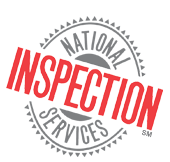UFFI is frequently identified as a cause of unhealthy indoor environments. Indoor air quality can be negatively impacted by the off-gassing of urea formaldehyde as it ages inside wall cavities.
Originally utilized in the late 1970’s as a retrofit insulation product, this material was typically pumped into hollow wall cavities and was recognized as an excellent thermal insulator. However, improper temperature, pressure, moisture and mixture during installation is now knows to inhibit the curing process of this material and can be responsible for generating toxic gas emissions for years to come.
Results which would identify the presence (or absence) of this UFFI gas can be available in approximately 24 hours and testing is relatively inexpensive.
Typically, hydrolysis breaks down the molecular structure of UFFI and can be responsible for the emission of ureaformaldehyde gas. The nationally recognized alert level is 0.1 parts per million, and 2 parts per million is the level at which abatement is mandated.
Testing for this form of pollution which is knows to be a respiratory irritant is accomplished with impinger instrumentation utilizing sodium bisulfite and chromatrophic acid tests. OSHA & NIOSH standards are applied to sampling and analysis techniques.
